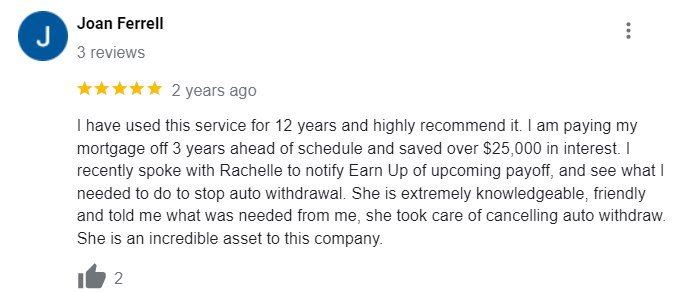Paying off student loans is a major financial goal for many people. But figuring out the best way to manage that debt can feel overwhelming. It’s easy to get lost in the details of interest rates, repayment plans, and potential forgiveness programs. That’s where these smart tips for paying off student loans come into play. You’ll learn effective strategies to tackle your loans and gain financial freedom.
Smart Tips for Paying Off Student Loans
It might feel like an uphill battle, but with the right approach, you can conquer those student loans faster and with less stress. Here’s a breakdown of strategies and tips for paying off student loans faster in 2024:
1. Make a Plan and Understand Your Loans
First things first, it’s vital to make a plan and grasp your student loan debt. Make a detailed list of all your loans, including the lender, interest rate, loan term, and monthly payment.
This will give you a crystal-clear view of your financial obligations. Having all your student loan information readily accessible will simplify the management process. You can get a free copy of your credit report at AnnualCreditReport.com to make sure you have all your loan info in one place.
For federal loans, go to StudentAid.gov and create an account to view those. The site lets you view all your federal loan details, make payments, and even research potential income-driven repayment plans. Having all this info together is super helpful.
2. Create a Budget That Works
This might seem obvious, but to get ahead of your student loans, you have to manage your money. So craft a practical budget that covers all your needs while leaving room to throw extra cash toward your debt.
Budgeting is your secret weapon to break free from student debt and regain financial peace of mind. By tracking where your money is going and prioritizing loan repayments, you’ll have more control over your finances.
Plus, watching those balances shrink each month is pretty motivating. You can create a budget worksheet to give you a good starting point. Try using apps that make tracking income and expenses super simple. It’s way easier than you might think.
3. Choose a Repayment Strategy That Suits You
When it comes to tackling student loans, there’s no one-size-fits-all approach. But figuring out your repayment strategy can set the stage for achieving your goals faster. TheStandard Repayment Plan is your default option with a set payment amount each month for 10 years.
This may not be your ideal choice, especially if those payments feel steep. So, research alternative repayment plans and select the one that best suits your income and circumstances. Explore different repayment plans such as the Extended Repayment Plan, which stretches your repayment over 25 years for lower monthly payments.
Just know that longer repayment time generally means higher overall interest. Also, look into the Income-Driven Repayment (IDR) options, which base your payments on a percentage of your income. That’s helpful when your budget feels tight. IDR plans can offer loan forgiveness after a certain period, so consider the pros and cons.
4. Target High-Interest Loans First
If you have multiple loans with varying interest rates, prioritize tackling those with the highest ones first. Paying these down quicker reduces the amount of interest you’ll end up paying over the life of those loans.
While paying the minimum on other loans, put any extra payments toward those high-interest loans. This focused approach helps you chip away at those pesky high-interest debts. This is one of those tips for paying off student loans that will definitely save you a considerable amount of money.
Just think, every dollar paid towards the highest interest rate loans is one less dollar racking up extra interest. Consider refinancing to potentially secure a lower interest rate, especially if you have a good credit score.
5. Explore Tax Deductions for Student Loans
Did you know you might be eligible for a tax break on the interest you pay towards your student loans? You’ve worked hard to earn that cash, so keep as much as possible by taking advantage of every break available to you.
You can deduct up to $2,500 in interest on your federal tax return each year. Keep in mind that the deduction phases out based on your income, so it might not be a great strategy for high earners.
Consult with a tax professional to see if it applies to your situation and explore potential student loan forgiveness programs, which could significantly reduce your overall debt burden.
6. Pay More Than the Minimum if You Can
Try to go beyond the minimum payment. Throwing any extra money you have toward your loans, even if it’s a few bucks each month, can cut down that debt faster. Think about how you could find extra money to accelerate those payments.
Side gigs? Freelance work? Part-time opportunities? This strategy may help save money over the long run. Use a student loan calculator online to see the impact of additional payments and be motivated by those extra bucks chipping away at the principal.
Make bi-weekly payments instead of monthly to potentially reduce the principal faster and save on interest over the life of the loan.
7. Set Financial Goals and Stay Motivated
Break those big loan balances down into manageable milestones so you feel you’re making headway. Setting specific and achievable targets, whether reducing the loan principal by a specific amount each month or paying off an entire smaller loan, will boost your commitment to becoming debt-free.
When you hit those milestones, celebrate. Small rewards throughout this repayment journey will keep things less stressful. You’ve got to stay motivated.
Remember why you took on those loans in the first place, and let that drive you forward. Picture a future with more financial freedom and fewer worries. It’ll keep those extra hours at your side hustle in perspective.
8. Make Use of Tools and Resources to Help
Thankfully, you’re not alone. There are free online resources to make tackling student debt easier. Remember the Loan Simulator from the Department of Education? This handy tool gives you the scoop on repayment plan options.
You can get advice from credit counseling non-profits about budgeting or making a debt-payoff plan that works. And, watch out for scams. There are many bad actors offering shady services, so always seek credible resources from well-respected sources.
Stick to advice from trusted sources like the Department of Education and the Consumer Financial Protection Bureau (CFPB). It’s way better to be safe than sorry.
9. Stay in Contact with Your Loan Servicer
Keep communication open with your loan servicer throughout your repayment process. Let them know of any address or contact changes ASAP.
Talk to them if you’re struggling financially or considering different repayment options. This open communication builds trust and a good working relationship.
It also keeps you in the loop on any program or policy updates that could be beneficial to you. If your financial situation changes, explore options like deferment or forbearance to temporarily postpone payments.
Conclusion
Student loans can be stressful, but they don’t have to feel overwhelming. These practical tips for paying off student loans offer a path forward. Be kind to yourself and acknowledge the effort you’re making.
As you conquer those student loans step by step, celebrate each victory. Remember that achieving financial freedom is a marathon, not a sprint, and every step you take toward paying off your student loans brings you closer to your goals.










